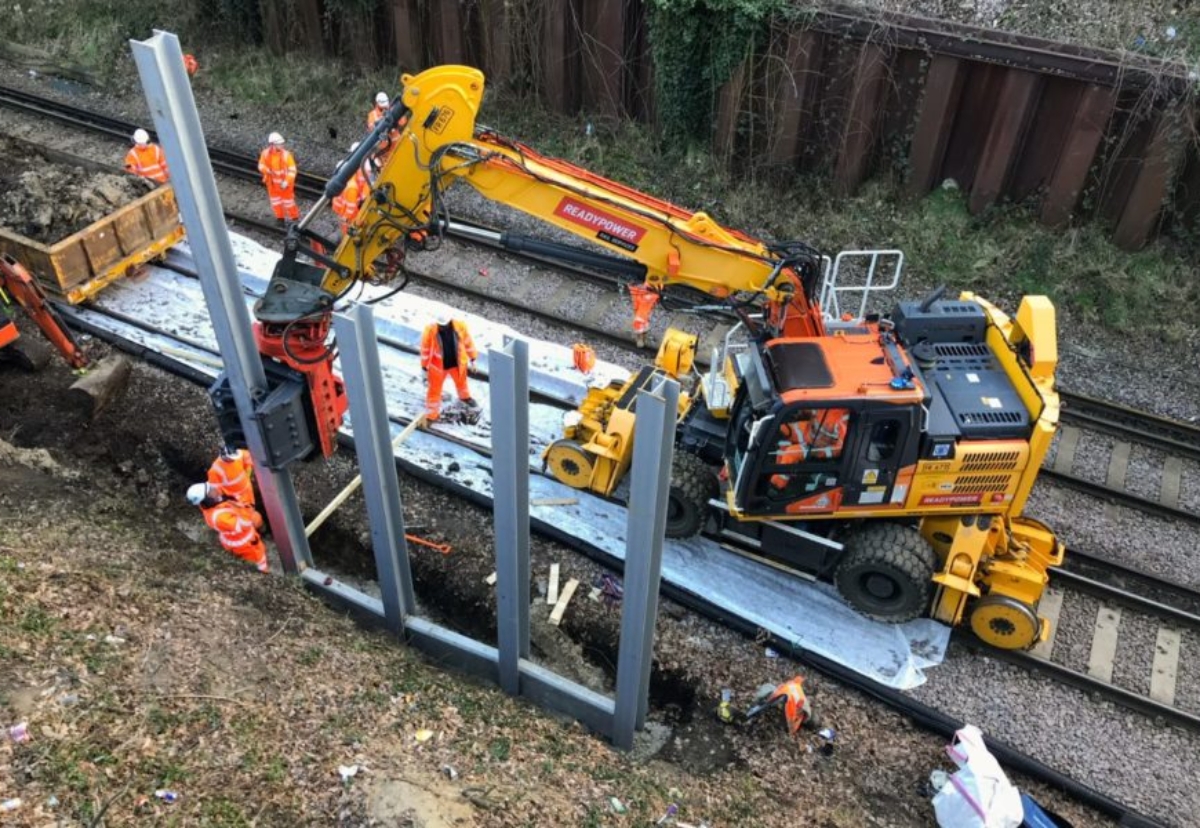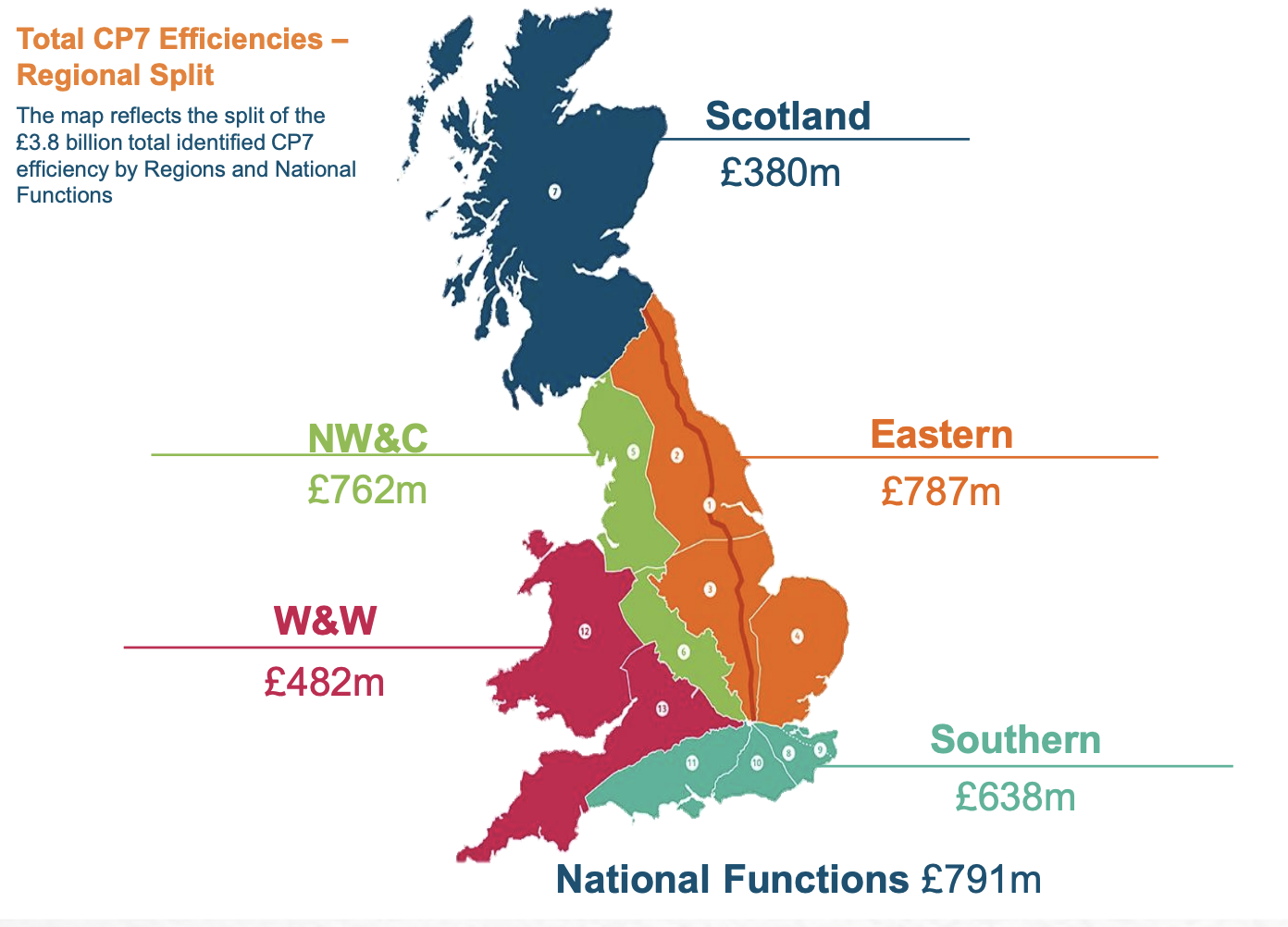Among its top tasks are finding £3.8bn in efficiency gains on work programmes, equating to around 10% savings.
It is also ramping up work programmes to improve network resilience in the face of climate change with spending in embankment works and drawing set to double to £1.8bn from 2024-29.
This will see the creation of dedicated earthworks and drainage teams, and improved operational weather expertise to lead the climate change adaptation strategy investment.
Overall rail infrastructure company is aiming to spend £44bn in the operations, maintenance and renewal of England and Wales’s railway, £1.8bn more that CP6.
Capital projects – enhancements – are now funded separately on a case-by-case basis and no longer form part of Network Rail’s five-year settlement.
The latest detailed operational and maintenance investment programmes are split between four operating regions.
In CP7, a quarter of targetted overall efficiencies are planned to come from more efficient ‘Delivery’ – completing more projects on time, on budget and to scope that delivers against what is required to modernise the network.
Significant commercial efficiencies will be delivered through smarter ways of working with contractors and taking a whole-industry approach to Network rail’s cost base.
The main drivers will be wider adoption of project SPEED (Swift, Pragmatic and Efficient Enhancement Delivery) particularly in the eastern region.
This has two core principles at its heart – to halve the time and reduce the cost of project delivery.
The tool previously used to manage project delivery GRIP is being replaced after being deemed as inflexible, with PACE, a new tool that allows project managers to adapt their approach, make decisions that best meet the needs of their project and delivery time and cost efficiencies while maintaining rigour.
In the Southern and Western & Wales regions the gains are hoped to come from fully integrated working with Network Rail as an intelligent client.
The Office of Rail and Road (ORR) will now review this initial strategic business plan and review how it measures up against the Government’s High Level Output Statement and Statement of Funds Available.

.gif)







.gif)
































 (300 x 250 px).jpg)













